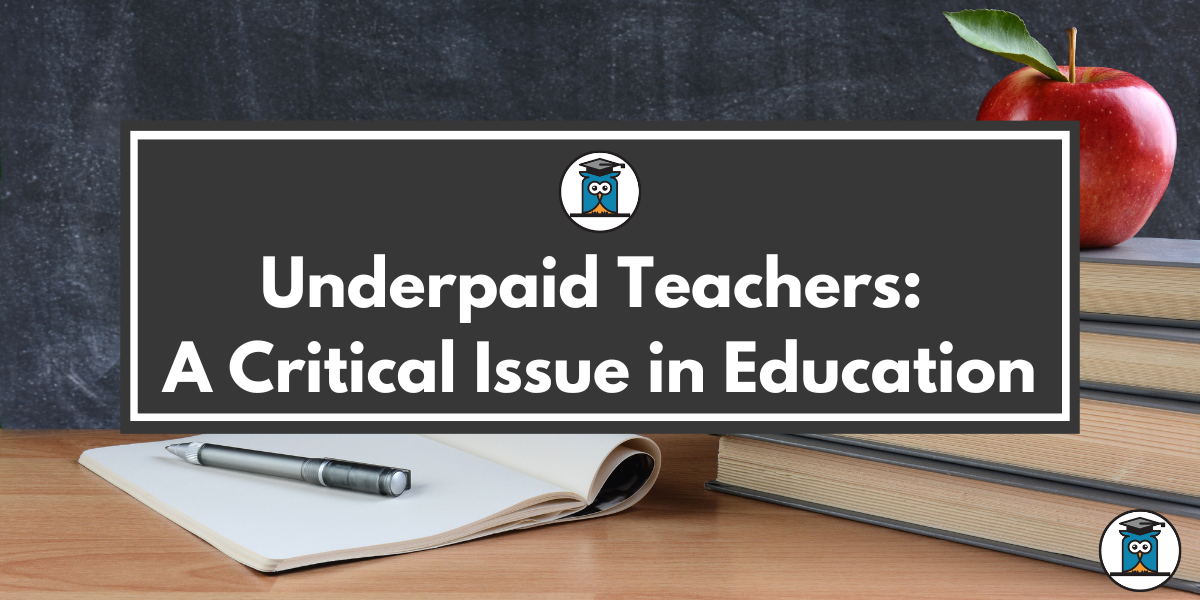We tend to really remember our teachers. But not in a vague, oh, that person was pretty cool, sorta way.
No, they make long-lasting impressions.
As young students, we’re very impressionable. And our teachers are major role models. We look for answers from them—we trust them.
We often forget that students, during the week, may interact with their teachers more than their parents.
Do we trivialize teachers’ contributions?
You’ve almost definitely heard the phrase, “teachers are shaping the next generation.” The problem is, “shaping the next generation” has seemingly become so ubiquitous that perhaps we’ve forgotten its implications, and in turn, forget to express gratitude for our educators.
A teacher’s job is to shape the people who, after departing from school, join the “real world”. And the quality of teaching majorly affects how these individuals show up.
Consider this: when these students come to join us in the world, who does their careers, decisions, and actions affect? Everyone. So unless you’re planning to leave Earth in search of a faraway private island bliss, teaching quality does indeed impact your life.
If we’re all, to some extent, products of our teachers, you can think of us as the flower buds, who need enough of the proper care to grow—meanwhile, the teachers are the gardeners.
And, as the flower buds, isn’t it in our best interest to advocate for the gardeners?
Teachers earn less than similarly-educated counterparts
As it stands, 23 states offer teachers an average starting salary below $40,000. Even more worrying, on average (inflation-adjusted), U.S. teachers earn less than they did 10 years ago.
According to the U.S. Census Bureau, more than ninety-five percent of elementary, middle, and high school teachers have a bachelor’s degree or higher. But on average, teachers earn less than their similarly-educated counterparts.
When you think about a teacher’s role and responsibilities, aren’t their qualifications, well, critical to their success?
Lower teacher salaries = lower quality teaching
Considering the undervaluation of the position and the lack of funding, it shouldn’t be too surprising that educators are finding it more and more difficult to garner the motivation to provide top-notch teaching. But how much does teaching quality really matter when it comes to student outcomes?
According to Economic Policy Institute, better teaching quality is the greatest determining factor for increased student achievement.
So, essentially, underpaying teachers inadvertently damages the quality of American education—and in turn negatively impacts all of us. In fact, the U.S. education ranking lags behind many of its global counterparts, according to Pew Research.
Higher teacher salaries = higher quality teaching
Research speculates that higher pay attracts higher-quality educators, improves retention, and boosts both morale and enthusiasm for the job. Additionally, when teachers have higher salaries, students tend to perform better, according to The Edvocate.
Plus, based on one study, The Edvocate notes, student achievement could improve by five to ten percent for every ten percent increase in teacher salary. This is likely due to how the pay raise would increase both teacher motivation and affordability for extra resources.
According to the Center for American Progress, a very good teacher—compared to a very bad one—can increase student achievement by as much as a full year’s difference.
So, yes, salary plays a whopping role in teaching quality.
Wage gaps between male and female teachers
There’s something else that may contribute to the issue of teacher underpayment: it’s a female-dominated field.
According to the U.S. Bureau of Labor Statistics, women earn less than men in almost every profession.
In 2022, women earned seventeen percent less than men. And while this wage gap for public elementary and secondary teachers is smaller than the average gap, it still exists.
The average base teaching salary for public school teachers:
- Females: $55,490
- Males: $57,453.
Meanwhile, women make up the majority in the teaching profession; out of the estimated 4,492,114 employed teachers in the U.S. seventy-four percent of them are women and almost twenty-six percent are men, according to Zippia. So the bottom line is that the large majority of teachers are women—and female teachers, on average, earn less than male teachers; which means that the problem goes deeper than teachers being underpaid.
Is there a definitive trend in which people in male-dominated fields earn more on average than people in female-dominated fields?
As it happens, there might be. When looking at the salary disparities for some of the positions that require similar education and responsibility/skills but are heavily divided by gender, it’s clear that there is, in fact, a wage gap.
For instance, according to the U.S. Bureau of Labor Statistics. The median earnings for information technology managers (male-dominated) are nineteen percent higher than that of HR managers (female-dominated). Meanwhile, janitors (male-dominated) earn three percent more than maids and house cleaners (female-dominated).
How did the teacher gender wage gap arise?
Now here’s where things get a bit sticky. Seemingly, the gender salary gap among teachers wasn’t accidental.
In the 1830s, the common school movement arose, aiming to use public money to fund schools in every community. Essentially, this was the beginning of the public school system in the U.S. This also marked the onset of a transition in which more women entered the teaching field.
Prior to the common school system, men dominated this occupation.
In order to expand the public education system’s reach, Common School reformers proposed that the country could afford to staff the new schools with female teachers, because the schools could pay them less than male teachers.
Women increasingly began taking on teaching positions; and this shift was associated with a decline in both wages and respect for teaching.
Teacher shortages across the country
The National Education Association estimates that there’s a shortage of approximately 300,000 teachers across the country.
A female-dominated role
As such, Motoko Rich, Tokyo bureau chief for The New York Times, suggested that the shortage may be in part due to the way in which a) teaching is a female-dominated field and b) teachers are underpaid.
“Jobs dominated by women pay less on average than those with higher proportions of men, and studies have shown that these careers tend to enjoy less prestige as well,” Motoko explained.
To that end, more men entering the profession could help magnify its status, improve wages, and in turn, mitigate staffing issues.
Teachers are chronically overworked
Also contributing to the shortages is the amount of work that educators actually do.
Believe it or not, across the country, K-12 teachers have the highest burnout rate.
This may surprise you, but the media often doesn’t accurately portray the true day in the life of a teacher—that is, we don’t really get the full picture in terms of the hard time and labor that educators put in.
Outside of class, teachers are planning their presentations, syllabi, classroom discussions, and assignments. And then they spend the entire school day executing actual classroom instruction—but don’t forget, teachers show up before the school day starts, and leave after it ends. Then, after all that, they go home to grade papers and projects—which inevitably may seep into their weekends.
Year after year, teachers have been proving something that many of us have always hoped is true: superhumans exist.
Teacher moonlighting
Having a side hustle, otherwise known as moonlighting, is common among teachers.
In fact, almost one-third of teachers in the U.S. have to take on a second job to take care of their families. 
In conjunction with their already-low wages, many educators use their own pocket money to pay for school supplies to make up for the lack of quality materials in their classroom—and this contributes to the need for moonlighting.
In fact, according to a survey by the National Center for Education Statistics, on average, teachers spend $479 of their own money annually on classroom supplies.
On top of that, many teachers have student loans to pay off.
The majority of educators’ second jobs fall outside of the education space; examples are waitressing, bartending, driving for ride apps, and working in retail. These teachers aren’t taking on these jobs voluntarily—rather, they have to. And when you think about the work that teachers already put in at school…how do you think taking on another job affects teaching quality?
One word: burnout.
Encouraging developments around teacher salaries
On a more positive note, we love to see that states and lawmakers are taking steps to better support educators.
In March 2018, educators in West Virginia executed a successful nine-day walk-out during which they demanded that state lawmakers reinvest in public education by raising educator salaries.
For one thing, the walk-out spurred the nationwide #RedForEd movement, which united educators to fight for more money and resources to be put into public schools.
Then, by 2020, several states had significantly increased teacher salaries. Notably, the teacher “pay penalty” (the wage gap between teachers and similarly-educated non-teachers) began to close.
Over the past year, it was clear that many state lawmakers were well aware of the need to increase teacher wages in order to recruit and retain quality educators.
On January 24, U.S. Secretary of Education Miguel Cardona delivered a speech that focused on 2023 priorities. Now that schools are back in-person, Cardona is putting his energy into focusing on academic recovery. Ultimately, he wants to support schools to improve global rankings.
First and foremost, Cardona noted, for this to happen, teachers need more respect. Cardona called on states and districts to commit to providing teachers with a competitive salary.
“Have we as a country minimized the profession so much that we’re OK with teachers driving Ubers and getting second or third jobs on the weekend to earn enough money to pay the bills?” asked Cardona, “I’m not OK with that.”











